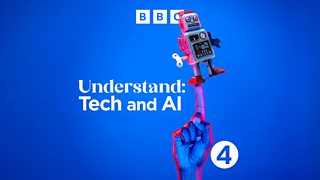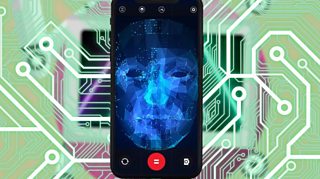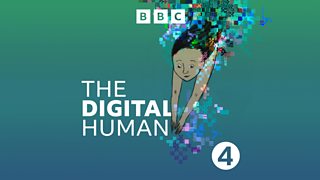All you need to know about tech and AI explained really simply
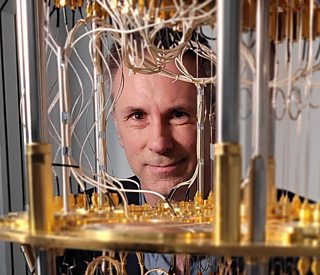
����ý Radio 4’s podcast series Understand: Tech and AI goes back to basics to explain the technology and artificial intelligence terms we hear every day, and what they mean for you. In this article, the show’s presenter Spencer Kelly breaks down some of these key concepts, explaining them as simply as possible.
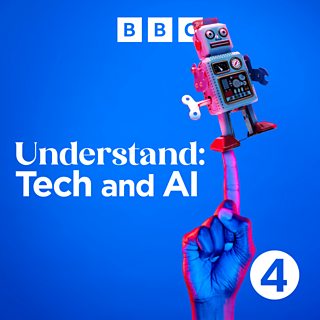
Listen to all episodes of Understand: Tech and AI on ����ý Sounds
The Internet
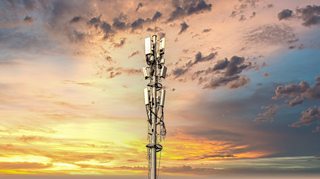
Most of us use it, but what actually is the Internet?
The Internet describes the many interconnected networks (that’s where the name comes from) that our phones, computers and other devices use to communicate with each other. This communication happens by the transfer of data, which is the way computers talk to each other. It would look unintelligible to us, but your device can interpret it as the text you’re reading now, as well as videos, music and more.
Many geeks (yours truly included) get annoyed when the Internet gets confused with the World Wide Web, but to be fair it’s an understandable misconception, since much of what we experience online uses both.
Think of it like this – the Internet is all the hardware – from the underwater cables spanning the globe and the vast racks of computers that route the data to the right location, to the individual wires that come into your house and the masts on hilltops (pictured) that send and receive signals from your phone. The World Wide Web is the software that organises much of what’s online, and gives us easy ways to find and access all of the stuff that’s there.
The Cloud

If you own a smartphone, a laptop or a desktop computer, you’ll probably have photos, videos, documents and apps stored on it. And although these devices can hold quite a lot of each, there is a limit. But imagine getting loads and loads of computers, connecting them all up to each other, and putting them in a big warehouse. Together, they would be able to store an unthinkable amount of stuff. Now, imagine thousands of these warehouses (they’re called datacentres) distributed around the world, all connected to the Internet, and all available for you to store your stuff on. Well, you’ve just imagined The Cloud.
Your phone can appear to do incredibly complicated things – but it’s often the Cloud doing the thinking.
If you use a Cloud service (some are free, but generally you’ll pay for more than a small amount), your data will flow off your device and into the Cloud, and you can access this data so long as your device is connected.
In fact the Cloud can do something else your computer can do too – compute. The incredible computational power of Cloud Computing means that your phone can appear to do incredibly complicated things, like speech recognition – but it’s often the Cloud doing the thinking.
VR and AR
Seriously, who would want to strap a small screen to their face and wiggle around as if they’re interacting with imaginary people? Well, there are plenty of people who think it may be the future.
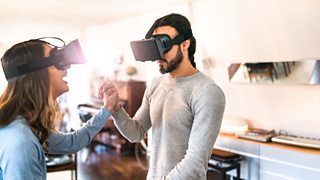
If you put on a Virtual Reality (or VR) headset, you will see a scene in front of your eyes – it may be a forest, or an alien planet. Then, moving your head in any direction, you should be able to look around this virtual scene as if you were really there. This is thanks to very accurate sensors in the headset that can detect your head’s movements, and tell the screen to shift the view to exactly match what you would expect to see. And it really is immersive.
Augmented Reality (or AR) is a version of this technology where, instead of completely immersing you in a different world, you can still see your actual surroundings on the screen in front of your eyes. But you can also see extra things, floating or standing in place as you walk around the room. It might be information about the objects in the room, or the people you’re talking to. It might even be a video game zombie hiding behind your sofa. AR technology is still in its infancy, so expect a limited experience for the time being.
Cryptocurrencies, Bitcoin and Blockchain

These days most payments and movements of money happen online. But with no physical cash changing hands, someone needs to keep track of what’s going where. This job used to fall to banks and other big financial institutions, which can check you really do have the reserves, and haven’t tried to pay two people at the same time with the same money.
But in 2009, just after the financial crash, when trust in the banks had taken a tumble, a viable alternative was invented. Bitcoin was the first so-called cryptocurrency (aka, crypto), a type of money which is not regulated by any one big organisation. Instead of banks keeping a record of who has what money and where, records of payments are stored on a big digital account book called a Blockchain, millions of copies of which are kept on volunteers’ computers around the world. This makes it extremely hard for anyone to change the record of the transactions. And it means that cryptocurrencies act a lot like physical cash – a payment is just between the two parties, with no-one in between.
The drawback to crypto is that if someone steals your digital wallet, there’s no easy way of getting your funds back (just like with cash). And also, unlike most currencies, the value of cryptocurrencies are not generally tied to any other currency, and fluctuate wildly as a result.
Big Data
A lot of the progress we’ve made as a species has been because we’ve gathered information about stuff. We learned that people who didn’t drink from certain water sources didn’t get ill. And that lung cancer was more likely to affect smokers than non-smokers.
Big Data makes it possible to spot patterns that may explain things about our world.
Well, now we are all giving out more data than we’ve ever done before. The weather is being sampled, traffic patterns are being monitored, and so are we. Our smartphones and computers, our payment cards and our smart TVs are all recording our habits and behaviour, and when we store and look at all of this information, we call it Big Data (because there’s a lot of it).
It would be impossible for humans to sift through all of this data, but these days powerful computers can. And it’s possible to spot patterns that may explain things about our world, predict future events, and suggest possible solutions.
The benefits to humanity are obvious – if we had access to everyone’s health data and diet, for example, we may be able to spot the causes of certain diseases.
However, social media and other companies are also collecting data about our behaviour online, in order to target us with more effective advertising. This has led to different people being shown different things in their social media feeds, threatening to envelop us each in our own echo chamber of things we want to see.
Artificial Intelligence
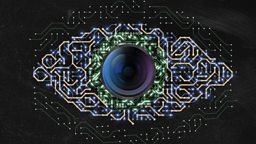
Computers are really good at following precise instructions, and doing so with incredible speed and accuracy. But the real world is messy, and lumpy and bumpy, and infinitely varied, which means there are loads of tasks that we just can’t describe to a computer using precise instructions – tasks such as understanding speech (we all sound different), or recognising objects (different cats look very different from different angles).
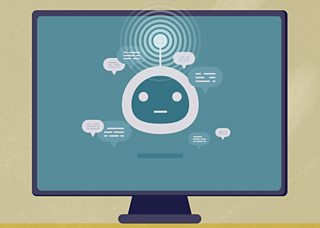
The reason that we’re all talking about AI now is because it has finally learned to have plausible-sounding conversations.
Artificial Intelligence (or more specifically the type of AI we call Machine Learning) describes a way of teaching computers to do things that we can’t describe precisely. We do it by feeding them a huge number of examples of what we want them to do, and systems called neural networks gradually “learn” how to do that one thing very well. For example, we might not know how to instruct a computer to drive a car, but if we give it enough examples of objects on the road, and how to behave around them, we can teach it.
The reason that we’re all talking about AI now is because it has finally learned to have plausible-sounding conversations.
ChatGPT is the fastest growing application in human history, and understandably so. You can have a conversation with it, and it’s very good at sounding human. It’s a form of Generative AI, which generates new, convincing-looking material based on a text prompt, be it images, music, videos, and of course text.
But although their output looks convincing, as if it had been produced by a human-like mind, it’s important to remember that these AI systems are not conscious. These things are in fact just very advanced predictive text programs.
There are some very legitimate concerns about Artificial Intelligence. But this isn’t the Terminator. We shouldn’t worry about creating sentient artificial beings, which may decide they want rid of the human race. Instead, as we integrate more of these computer programs into our society, we should make sure we understand how and why they work.
To hear more tech and AI concepts explained simply, listen to Understand: Tech and AI on ����ý Sounds.
More from the ����ý
-
![]()
Understand: Tech and AI
Spencer Kelly goes back to basics to explain the tech and AI terms we hear every day.
-
![]()
Five things you really need to know about AI
Terrified, excited or just bewildered by artificial intelligence? Here’s what you really need to know.
-
![]()
The Digital Human
Aleks Krotoski explores the digital world.
-
![]()
Living with AI
AI technologies have been developing faster than anyone expected. How worried should we be?
